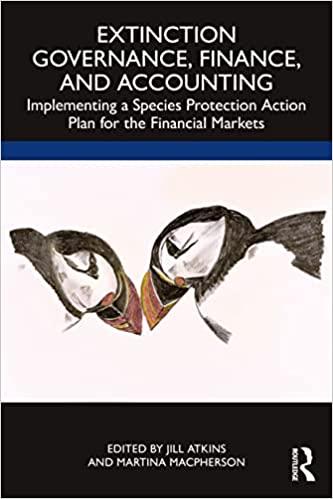Question
Consider a serialized process of a production consisting of 4 stages, A, B, C, and D. Currently there is one machine at each stage. Stage
Consider a serialized process of a production consisting of 4 stages, A, B, C, and D. Currently there is one machine at each stage.
Stage A is cleaning process, each unit takes 1 min and 30 seconds at this station
Stage B is a welding process. The constant output rate is 50 units per hour
Stage C is a painting station; it takes 2 minutes to finish the job for each unit
Stage D is a packing station; each unit takes one minute
Suppose market demand for this product is 41 units per hour (9,840 units per month) and the unit profit margin associated with the sales of the product is $7. Also assume the followings:
- Acquiring an extra machine at any particular station would double the output of that station.
- Cash flows compound monthly to perpetuity, an annual cost of capital of 12%
- 8 hour daily operation, production is run 30 days per month
Answer the following questions:
Part A. A vendor that sells a cleaning machine offers an upgrade to your existing machine at station A. After the upgrade, the machine will simply clean faster. The time spent for each unit will be reduced to 1 minute and 15 seconds. If the upgrade cost is a one-time charge of $1,500. Would you consider this upgrade?
Part B. How much are you willing to pay for an additional machine at the bottleneck stage?
Part C. Suppose the output at stage C is 60/hour. Now, you have an option to rent an additional machine at station A for which again will double the output rate of stage A to 80/hour. The rental cost is $19.5/hour; would you consider renting this machine for stage A? Why?
Vehicles arrive at a remote border inspection station at the rate of 10 per hour (Poisson). For simplicity, assume that there is only one inspector who can inspect vehicles at an average rate of 12 per hour. Inspection times are exponentially distributed.
Part A. What is this waiting line model? What is the average length of the queue?
Part B. What is the utilization rate of the inspector?
Part C. What is the probability that when you arrive there will be three or more vehicles ahead of you?
Part D. From the inspectors experience, if a vehicle waits longer than half an hour in the line, the driver will complain about the excessive wait times. On average, how many complaints can be expected in an hour? Hint: Try to relate this question to one of the probability equations.
Step by Step Solution
There are 3 Steps involved in it
Step: 1

Get Instant Access to Expert-Tailored Solutions
See step-by-step solutions with expert insights and AI powered tools for academic success
Step: 2

Step: 3

Ace Your Homework with AI
Get the answers you need in no time with our AI-driven, step-by-step assistance
Get Started


